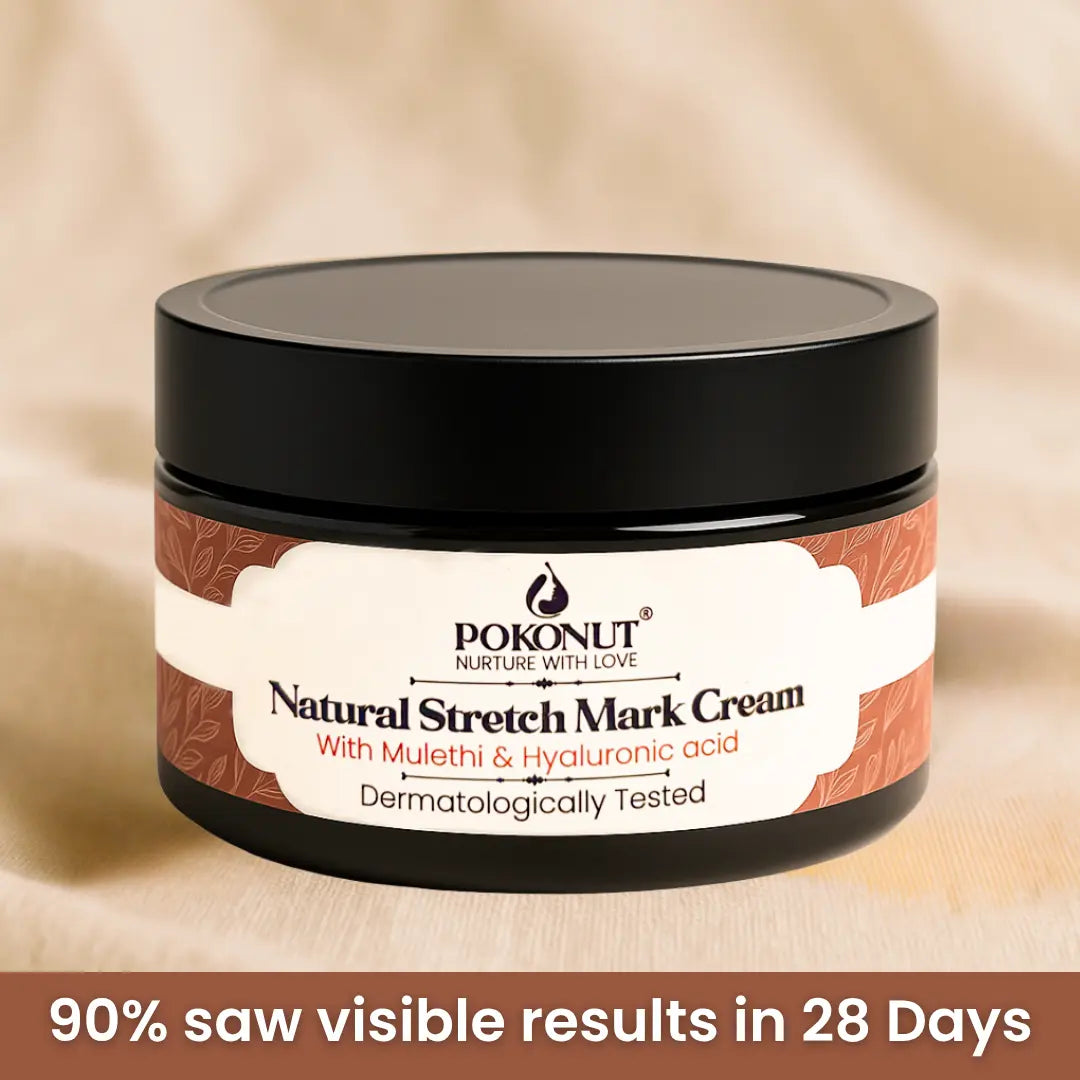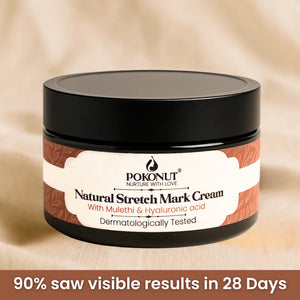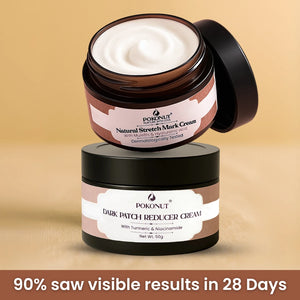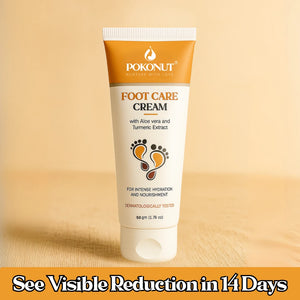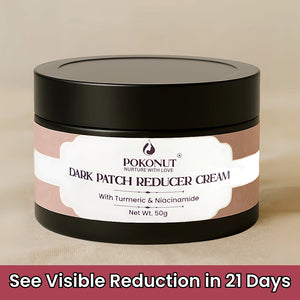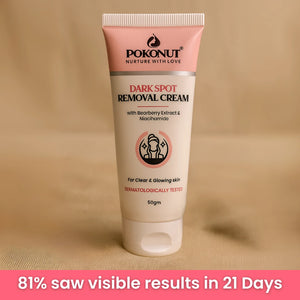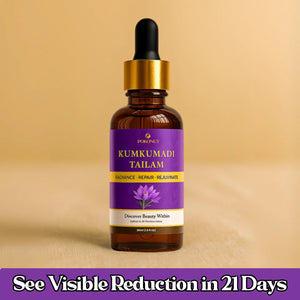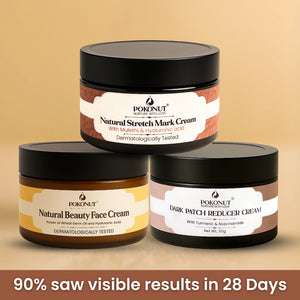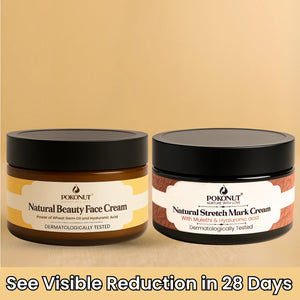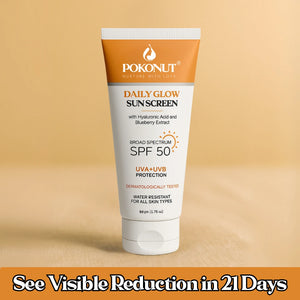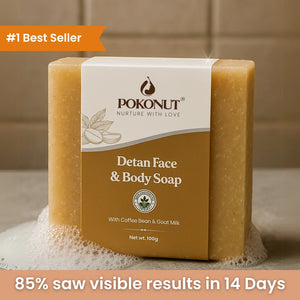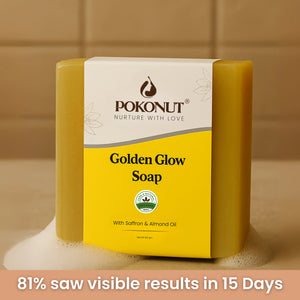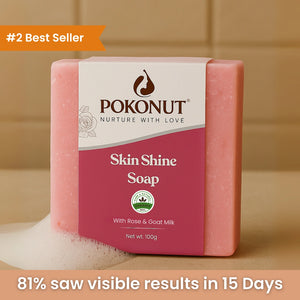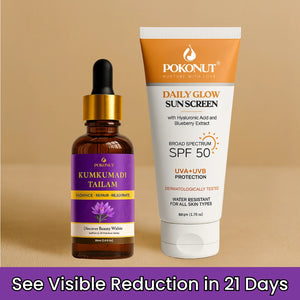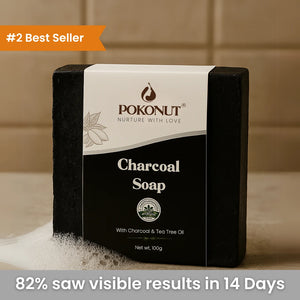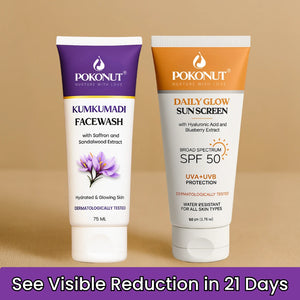Can Kojic Acid Make You Darker?

Medically Reviewed By:
Dr. Mousumi Dash, BAMS
Written by Our Editorial Team
It’s a surprising question — but one that many people genuinely ask after trying this popular brightening ingredient. Kojic acid is widely known for fading dark spots and evening out skin tone, but in some cases, it can temporarily make your skin appear darker before it gets better.
Most people know kojic acid as a skin lightener that fades dark spots. The acid works by blocking tyrosinase, an enzyme that produces melanin. Some users see their skin darken during the first phase of treatment. Scientists call this the "purging phase". Skin-brightening ingredients like kojic acid speed up cell turnover and expose deeper layers of hyperpigmented skin before they fade. Research shows kojic acid helps fade melasma and other dark spots. A study found that 70% of participants saw their melasma improve.
You'll learn why this temporary darkening happens in this piece. We'll cover ways to prevent it and help you get the skin benefits you want from kojic acid.
Why some people think kojic acid makes skin darker
People often feel surprised when their skin gets temporarily darker after they start using kojic acid treatment. This unexpected effect makes many wonder if the product actually works. Let's get into three reasons behind this change.
Original purging and exfoliation phase
Your skin might go through "purging" after adding kojic acid to your skincare routine. This happens because kojic acid speeds up skin cell turnover and brings hidden issues to the surface. Kojic acid works differently from retinoids or BHAs. It blocks melanin production instead of dramatically speeding up cell turnover. All the same, some users experience this effect.
Signs of purging may include:
-
Breakouts in areas where you typically get them
-
Whiteheads, blackheads, or small red bumps
-
Mild inflammation in treated areas
The reaction usually lasts about 3 weeks—enough time for your epidermis to renew itself. Patient and consistent use of your routine becomes significant during this time.
Temporary darkening due to increased cell turnover
Kojic acid's initial work can trigger a mild inflammatory response. This inflammation might boost temporary melanin production—exactly what you're trying to avoid. New skin layers surface during cell renewal and reveal previously hidden dark spots. This makes your skin look darker for a while.
This unexpected effect doesn't mean the product isn't working. In stark comparison to this, it shows that the product actively affects your skin's melanin production mechanisms.
Photosensitivity and lack of sun protection
Sun sensitivity ranks as the most important reason behind kojic acid-related darkening. The product makes your skin more vulnerable to sunlight by blocking melanin—the pigment that shields your skin from UV damage. Then, even brief sun exposure without protection can cause sunburn and more pigmentation issues.
This creates a vicious cycle: Less melanin leads to more sun damage, and more sun damage creates darker skin. Light exposure through windows or on cloudy days adds to this effect.
Using kojic acid without a broad-spectrum sunscreen (SPF 30 or higher) defeats its purpose. Protection becomes a vital part of avoiding skin darkening and achieving kojic acid's desired results.
What actually causes skin darkening during use
Your skin might temporarily darken after using kojic acid. This effect can be confusing, but there's a scientific reason behind it. Let's explore why it happens and how you can get the best results from kojic acid for your skin.
Post-inflammatory hyperpigmentation (PIH)
Kojic acid works as a skin lightener, but it can actually cause post-inflammatory hyperpigmentation in certain cases. PIH shows up after your skin gets injured or inflamed, and people with darker skin tones experience it more often. Here's what happens: when kojic acid irritates your skin, your body's inflammatory response kicks in. This response gets prostaglandins, leukotrienes, and thromboxanes going, which make melanocytes more active. Your skin ends up producing more pigment instead of less.
Dark patches appear exactly where the inflammation happened. These spots can stick around for weeks or maybe even years without proper treatment. There's another reason this is a big deal - the pigment spreads unevenly, which makes the discoloration stand out even more.
That’s why choosing the right cream for dark spots on face becomes essential — especially one with soothing ingredients that can fade pigmentation without irritating your skin further.
Overuse and skin barrier damage
Using too much kojic acid is another way your skin might get darker. Dermatologists say 1-2% concentrations are safe, but many people use products too often or pick formulas with higher percentages.
Signs of overuse include:
-
Contact dermatitis (redness, itching, swelling)
-
Persistent irritation and rashes
-
Dry, flaking skin
-
Uncomfortable burning sensation
Damaged skin barriers create perfect conditions for PIH to develop. What starts as an attempt to lighten your skin ends up doing the opposite, especially when products have more than the safe 1% concentration.
Skipping sunscreen and UV exposure
The biggest problem with kojic acid comes from not using enough sun protection. Kojic acid works by stopping tyrosinase and cutting down melanin (your natural sunscreen), which leaves your skin much more likely to get UV damage.
Dermatologists call this a counterproductive cycle. Less melanin means your skin burns easier, which triggers new dark spots. The sun also works against kojic acid's brightening effects by making your skin produce fresh melanin.
Without using broad-spectrum sunscreen daily, you're just "bailing out a boat with a hole in it".
How to avoid darkening and get visible kojic acid results
At Pokonut, we believe skincare should be both effective and gentle. Our formulations are crafted with ingredients like kojic acid, niacinamide, and ceramides to help you achieve brighter skin without compromising barrier health.
|
Tip |
Why It Matters |
How to Do It |
|
Introduce kojic acid gradually |
Prevents irritation and reduces the risk of rebound pigmentation or darkening. |
Start with 2–3 applications per week. Increase frequency only after skin adapts. Always do a patch test first. |
|
Use it at night to reduce sun risk |
Kojic acid increases sun sensitivity, which can cause dark spots if used during the day. Skin also repairs itself better at night. |
Apply kojic acid products before bed and avoid sun exposure right after application. |
|
Pair with calming ingredients like niacinamide |
Niacinamide soothes skin, boosts barrier strength, and enhances brightening effects. |
Use products that combine kojic acid with niacinamide, or layer niacinamide serum after applying kojic acid. |
|
Hydrate and moisturize regularly |
Kojic acid can cause dryness, which weakens the skin barrier and may lead to irritation and darkening. |
Use a non-comedogenic moisturizer containing hyaluronic acid or ceramides after applying kojic acid. |
|
Limit exfoliation to 2–3 times a week |
Over-exfoliation can damage your skin barrier and increase pigmentation. Kojic acid is already mildly exfoliating. |
Avoid layering kojic acid with strong exfoliants or retinoids. Exfoliate no more than 2–3 times weekly. |
When to stop using kojic acid or see a dermatologist
Knowing the right time to stop using kojic acid is vital to keep your skin healthy. You should stop treatment right away if you notice certain reactions, even when applying it correctly.
Signs of allergic reaction or persistent irritation
Contact dermatitis is the most common negative reaction to kojic acid. Stop using the product immediately if you notice:
-
Redness, irritation, or itchiness
-
Swelling or rashes
-
Pain or burning sensations
-
Hives or shortness of breath (rare but serious)
These symptoms show up more often in people who have sensitive skin or use products stronger than 1% concentration. You should see a dermatologist if these symptoms last several days after stopping use.
No improvement after 10 weeks
Skin-lightening treatments need patience, but you should see visible changes within a reasonable time. Some people see results in just a few weeks, and kojic acid usually needs 6-10 weeks of regular use to show the most important results.
A dermatologist's evaluation might help if you've used kojic acid consistently for over 10 weeks without seeing any improvement in dark spots or hyperpigmentation. They can check whether:
-
Your skin responds better to other treatments
-
You need stronger prescription formulations
-
Other skin conditions block your progress
Alternative ingredients to think over
People who can't use kojic acid have several effective options:
Niacinamide brightens skin with minimal irritation risk and works well with other ingredients. Alpha arbutin works like kojic acid but usually causes less irritation. Vitamin C protects and brightens skin with its antioxidant properties.
A solid skincare routine with regular sunscreen use remains vital if you switch from kojic acid. Note that skin-lightening results from kojic acid may fade gradually if you stop treatment without addressing the mechanisms of hyperpigmentation.
Conclusion
Kojic acid works well to brighten skin, even though some users see their skin darken for a while. This darkening happens because of skin purging, faster cell turnover, and light sensitivity - not because the acid isn't working. Learning how these processes work helps you avoid unwanted darkening and get better results.
Patience is a vital part of using kojic acid products. Your skin needs about three weeks to adjust to the treatment. The skin might look worse before improving. All the same, you'll see the brightening results you want if you stick to it and take proper care.
Protection from the sun is without doubt the biggest factor in kojic acid treatment success. Even the best kojic acid products won't work without daily SPF because UV rays fight against the brightening effects. On top of that, you'll boost your chances of success by following the right frequency, using it at night, and mixing it with soothing ingredients like niacinamide.
Your skin might need different solutions if you see ongoing irritation or no changes after 10 weeks of regular use. You might want to ask a dermatologist or try other brightening ingredients. Skincare works differently for everyone - what gives one person great results might not work for someone else.
Kojic acid gives amazing brightening benefits to many people who use it right. Success comes from knowing how it works, setting realistic timelines, and taking steps to prevent side effects. This knowledge helps you make smart choices about adding kojic acid to your skincare routine to get the brighter, even skin tone you want.
FAQs
Q1. Can kojic acid temporarily darken my skin?
Yes, some users may experience temporary darkening when first using kojic acid. This is often due to increased cell turnover, which can bring underlying pigmentation to the surface. However, with consistent use and proper skincare practices, this effect should subside, leading to the desired skin-brightening results.
Q2. How can I prevent skin darkening while using kojic acid?
To prevent skin darkening, always use a broad-spectrum sunscreen with at least SPF 30, apply kojic acid products at night, introduce the ingredient gradually, and pair it with soothing ingredients like niacinamide. Also, ensure you're moisturizing regularly to maintain skin barrier health.
Q3. How long does it take to see results from kojic acid?
Most people start noticing improvements in skin tone and dark spots after 6-10 weeks of consistent use. If you don't see any changes after 10 weeks of proper application, it may be time to consult a dermatologist or consider alternative treatments.
Q4. Are there any side effects of using kojic acid?
Some people may experience side effects such as skin irritation, redness, or dryness. In rare cases, contact dermatitis can occur. If you experience persistent irritation or signs of an allergic reaction, discontinue use and consult a dermatologist.
Q5. Can I use kojic acid with other skincare products?
Yes, but be cautious when combining kojic acid with other active ingredients. It pairs well with niacinamide and can be used in conjunction with moisturizers. However, limit exfoliation to 2-3 times a week and avoid using harsh exfoliants or potent actives like retinoids alongside kojic acid to prevent skin irritation.
About Doctor :

